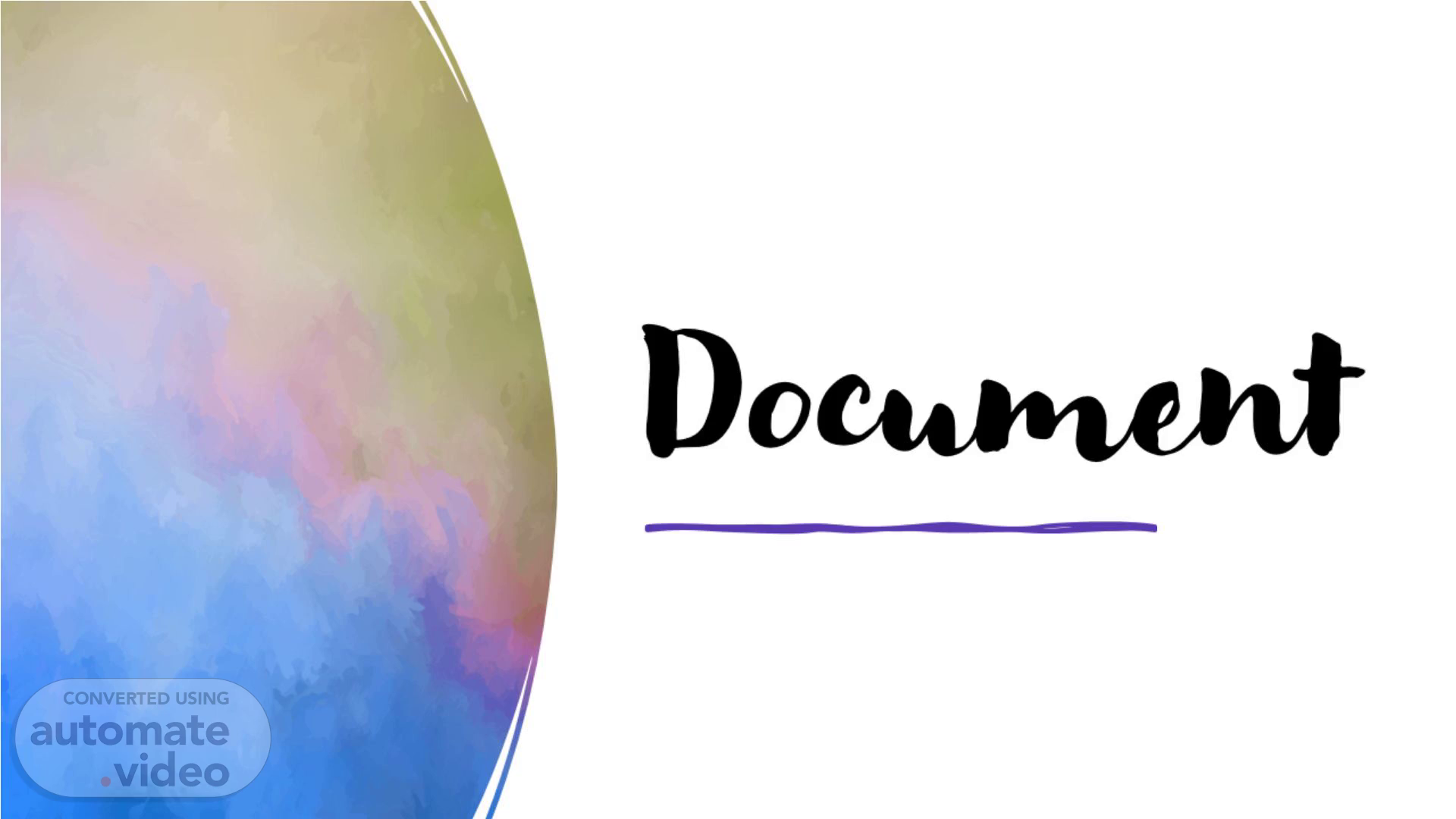Scene 1 (0s)
Document. [image].
Scene 2 (6s)
Slide 1: Title Slide. Title: Exploring Our Solar System Subtitle: A Journey Through the Wonders of Space.
Scene 3 (16s)
Slide 2: Introduction to the Solar System. Introduction: Welcome to our journey through the solar system, a vast expanse of celestial bodies orbiting around the Sun Key Points.
Scene 4 (29s)
Slide 2: Introduction to the Solar System. Definition of the Solar System: The collection of planets, moons, asteroids, comets, and other objects bound together by gravity Central Star: The Sun, the largest object in the solar system, providing light and heat to all planets Overview of Planets: Eight planets in total, divided into two categories - terrestrial planets and gas giants.
Scene 5 (48s)
Slide 3: Terrestrial Planets. Introduction: The inner planets, also known as terrestrial planets, are characterized by solid surfaces and rocky compositions Key Points.
Scene 6 (1m 1s)
Slide 3: Terrestrial Planets. Mercury: Closest planet to the Sun, with extreme temperature variations Venus: Known for its thick, toxic atmosphere and intense greenhouse effect Earth: Our home planet, unique for its abundance of liquid water and life-supporting conditions Mars: Often called the "Red Planet," with evidence of water in its past and potential for future exploration.
Scene 7 (1m 22s)
Slide 4: Gas Giant Planets. Introduction: Beyond the asteroid belt lie the gas giants - massive planets primarily composed of hydrogen and helium Key Points.
Scene 8 (1m 33s)
Slide 4: Gas Giant Planets. Jupiter: The largest planet in the solar system, known for its iconic Great Red Spot and numerous moons Saturn: Famous for its spectacular ring system, composed of icy particles and dust Uranus: A unique feature is its sideways rotation axis, giving it an unusual orbit Neptune: Farthest planet from the Sun, with striking blue coloration and powerful winds.
Scene 9 (1m 53s)
Slide 5: Moons, Asteroids, and Comets. Introduction: Beyond the planets, our solar system is populated by a diverse array of moons, asteroids, and comets Key Points.
Scene 10 (2m 6s)
Slide 5: Moons, Asteroids, and Comets. Moons: Many planets, particularly gas giants, have numerous moons with fascinating geological features and potential for exploration Asteroids: Rocky bodies that orbit the Sun, often found in the asteroid belt between Mars and Jupiter Comets: Icy bodies that originate from the outer regions of the solar system, characterized by tails when they approach the Sun.
Scene 11 (2m 27s)
Slide 6: Conclusion and Call to Action. Conclusion: Our solar system is a marvel of cosmic beauty and scientific discovery, offering endless opportunities for exploration and understanding Call to Action: Let us continue to explore, study, and protect our solar system for future generations References: Include references to reputable sources for further reading and exploration NASA - National Aeronautics and Space Administration ESA - European Space Agency National Geographic: Solar System Exploration Space.com: The Solar System: Sun, Planets, Moons, Asteroids, Comets "Cosmos" by Carl Sagan.
